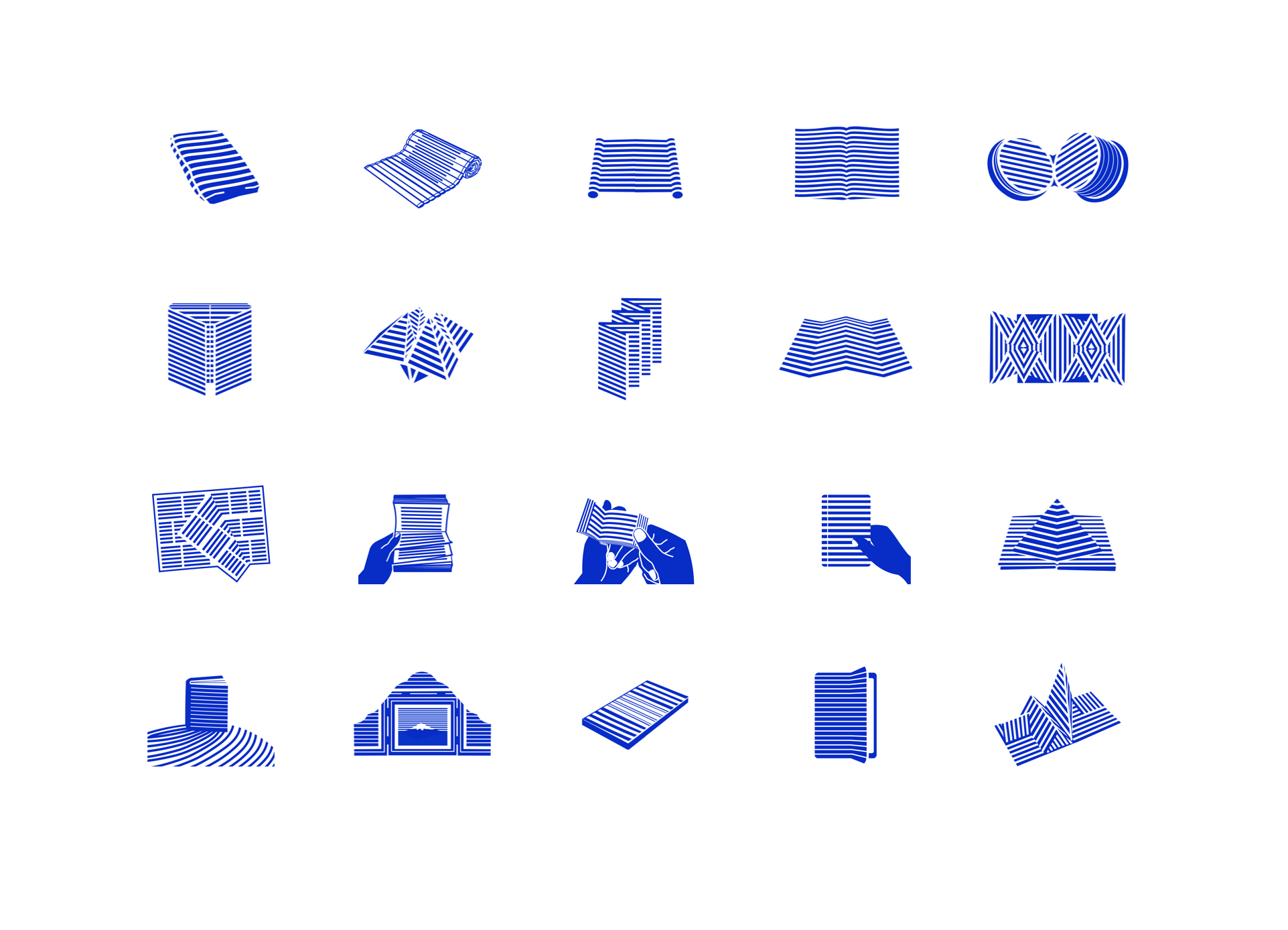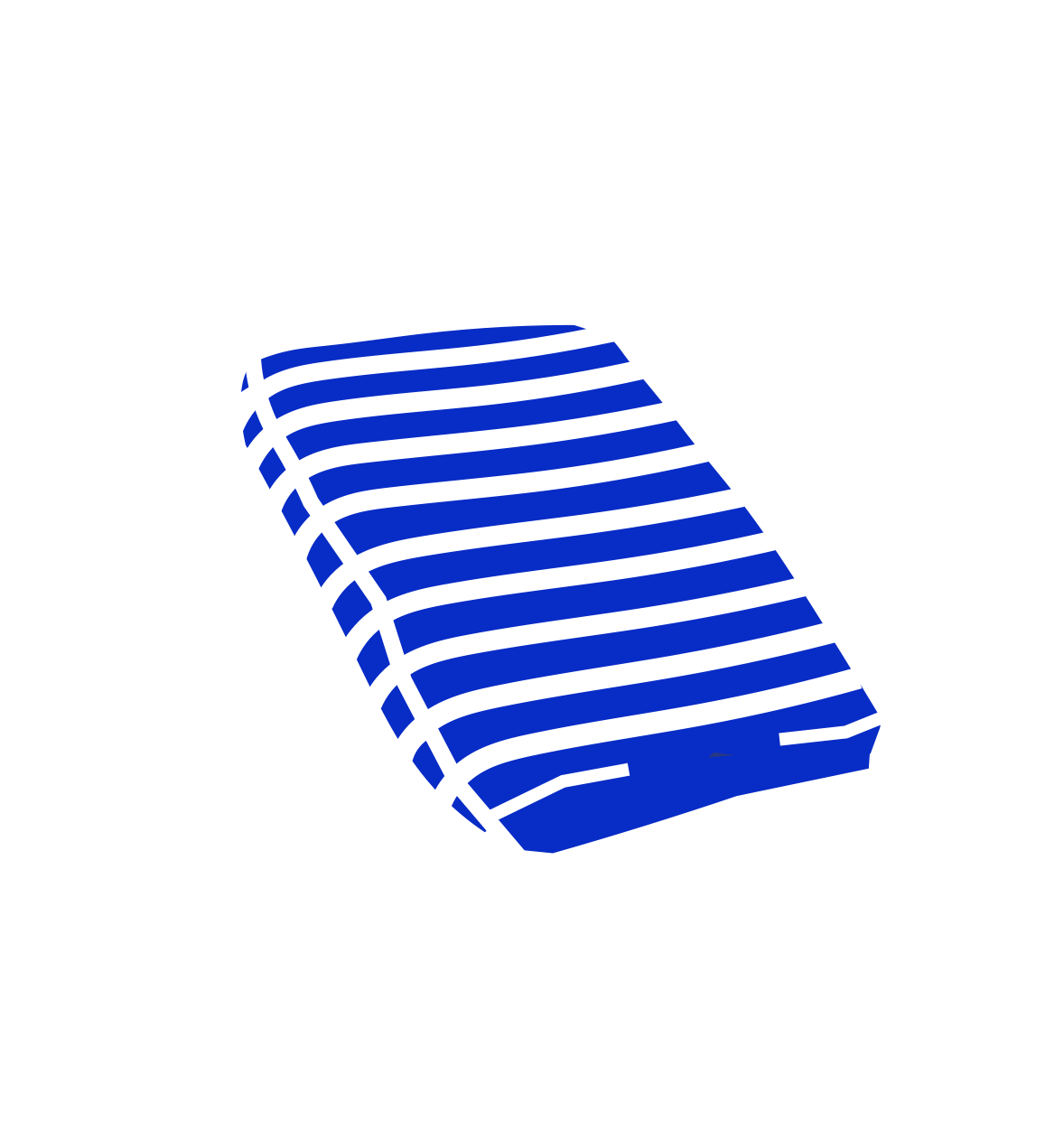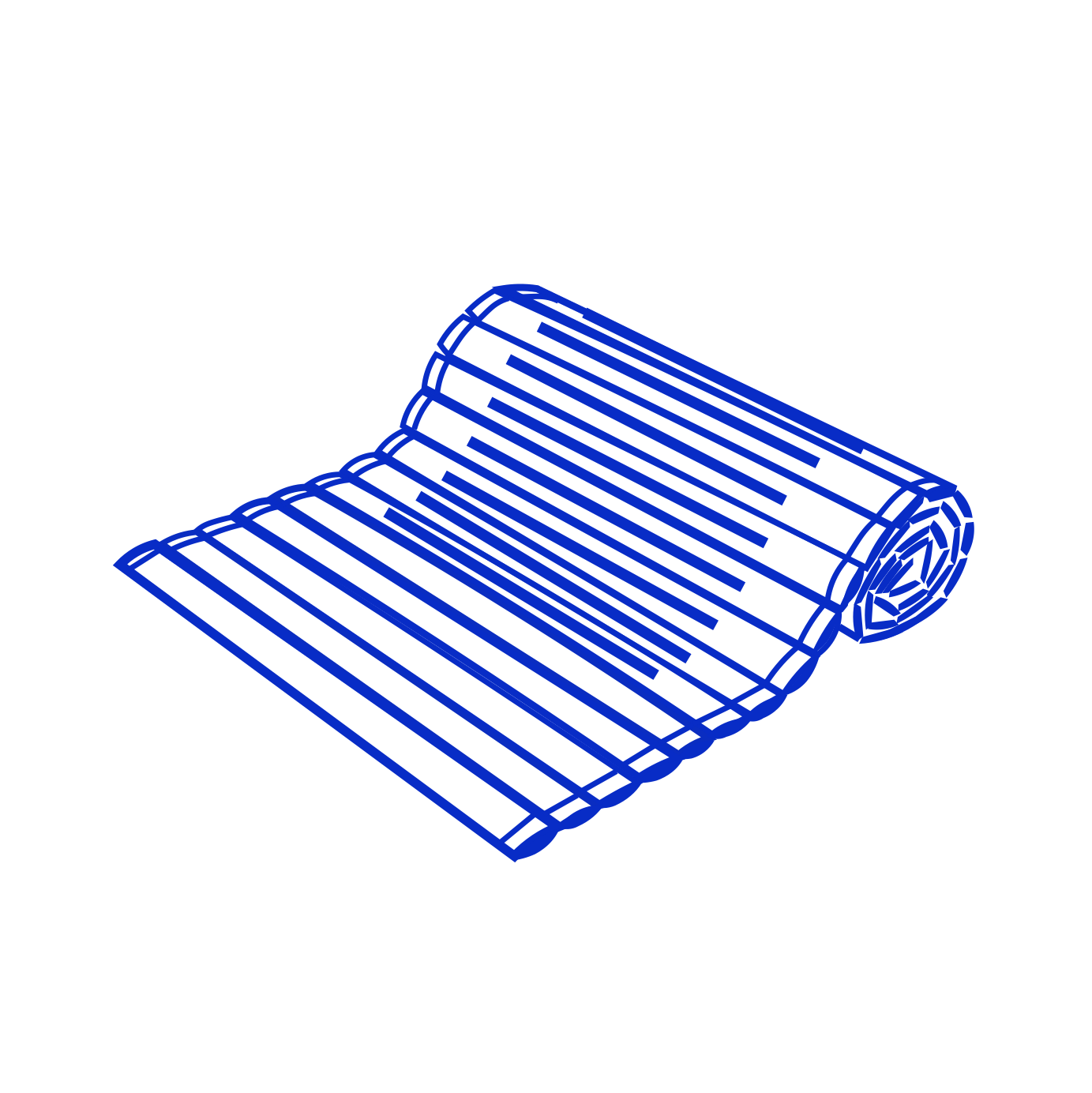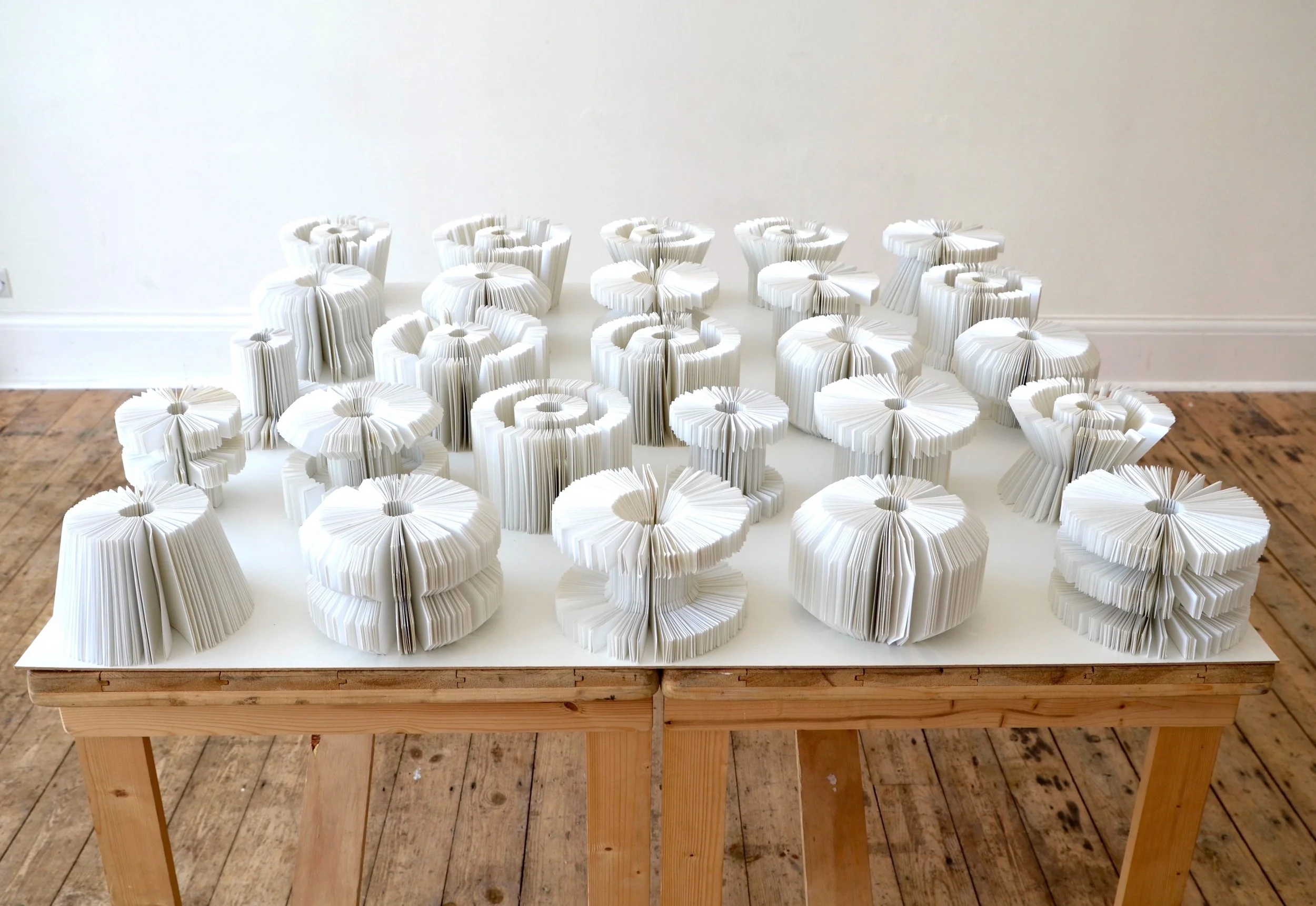A limited edition of 25 Risograph prints. Printed on A3 paper (140gsm), this work cuts and splices signal flags together to produce a glitchy, abstract pattern. A message may hide therein.
Blog: Book Forms
What started as a list snowballed into this; a series of twenty images that illustrate established book forms. Not that this is exhaustive. There are no audio books listed. Nor does it include the grisly practice of anthropodermic bibliopegy - the act of binding books with human skin. Shudder. It does, however, include the clay tablet, the bamboo roll, the scroll, the codex, the codex rotundus, French doors, the fortune teller, the concertina, the map fold, the Turkish map fold, loose leaf, dwarsligger, the flip book, the hand book, the pop-up book, the miniature book, kamishibai, the paperback, the ebook, and the artist’s book. Good reading.
In the Ancient Near East, clay tablets were used as a writing medium from the Bronze Age to the Iron Age. Cuneiform characters were drawn on a wet clay tablet with a stylus made of reed, and then left to bake in the sun. Collections of clay documents made up the first archives, the root of the first libraries.
↑ Clay tablet
Long before the widespread introduction of paper in China, bamboo canes were split and strung together to form the main media for writing documents. Bamboo books utilised an abundant natural resource to produce portable writing surfaces.
↑ Bamboo book
The Codex Rotundus (late 1500s) is a unique example of medieval book culture given its distinctive circular shape. Written in Latin and French, this manuscript is 266 pages long and measures about 9cm in diameter.
↑ Codex Rotundus
A fortune teller (also called a cootie catcher, chatterbox, whirlybird, or paku-paku) is a form of origami used in children's games. By choosing from several options on its exterior panels, the player is led to a hidden outcome.
↑ Fortune teller
The Turkish Map Fold is a unique and sculptural book form made from a single piece of paper, with an optional cover. As you open the book, the piece of paper unfolds so you can see the entire sheet.
↑ Turkish map fold
Dwarsligger (meaning crossbeam in Dutch) is a book printed with text parallel to the spine of a conventional book. This binding method permits the book to remain open without restraint so it can be read with one hand.
↑ Dwarsligger
A flip book, flicker book, or kineograph is a booklet with a series of images that very gradually change from one page to the next, so that when the pages are viewed in quick succession, the images simulate motion.
↑ Flip book
Kamishibai (which translates as paper play) is a form of storytelling that was popular during the 1930s and 1940s in Japan. Kamishibai are performed by narrators who travelled with sets of illustrated boards that they placed in a miniature stage-like device and narrated the story by changing each image.
↑ Kamishibai
Based on the graphic artist Antonio Ladrillo’s book Colors (2020) this illustration of an artist’s book allows the reader to explore endless combinations of reading, in both two- and three- dimensions.
↑ An artist’s book
Asemic Writing
Asemic Writing is a wordless form of writing. The word asemic means "having no specific semantic content". I made these by applying ink on paper. I started by designing strokes. I then arranged them on a page, repeating them at intervals that felt right.
The top image shows a work that sold at Launchpad Gallery, Yokohama.
A-Z²
A-Z² is a series of 26 hand-sewn circular books. Each book consists of blank pages cut in the shape of a letter of the alphabet. I have always been attracted to the abstract nature of written language and typography. When I began this work, I wanted to make type concrete, somehow. I was also drawn to the paper’s blankness having so much potential. It’s pregnant with possibility. As I began working with bookbinding techniques, I realised I could expand this potential by making them circular books, obscuring the letter forms in the process.
This work was shown at ONCA in Brighton and as part of the Royal College of Art’s RCA Secret Exhibition.




















